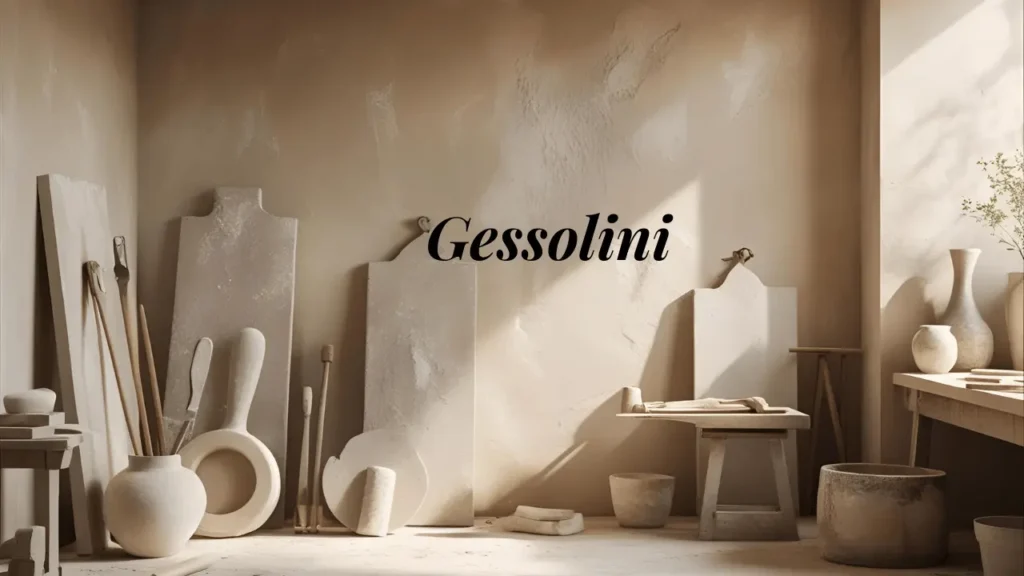The word gessolini carries with it a sense of history, artistry, and cultural depth. While it may not be widely known in mainstream use, this unique term is rooted in craftsmanship, creativity, and Italian tradition. Over time, gessolini has evolved to represent not only a material associated with plaster and chalk but also an artistic and lifestyle concept tied to elegance, texture, and mindful design. This article explores the meaning, history, and significance of gessolini across different aspects of art, design, and culture.
The Historical Roots of Gessolini
The origins of gessolini can be traced to Italy, where the word itself is connected to “gesso,” the Italian word for chalk or plaster. The diminutive suffix “-ini” transforms it into “little chalks” or “small plaster.” Historically, it referred to fine plasterwork and decorative detailing, widely used during the Renaissance period. Families who specialized in frescoes, sculpture, or ornamental wall finishes often worked with plaster-based mixtures that may have been referred to as gessolini. Over time, the term developed associations with both the material itself and the people who mastered its use.
Gessolini in Art and Craft
One of the most important uses of gessolini lies in its application as an artistic medium. Artists and craftsmen have long relied on plaster-like substances to prepare canvases, create molds, and build intricate decorative pieces. Whether in sculpture, restoration work, or frame ornamentation, gessolini has played a role in giving strength, durability, and beauty to art.
In fine arts, gessolini is also seen as a reference to small chalk sticks or soft pastels used for sketching and drawing. These tools allowed artists to explore delicate shading, precise lines, and expressive creativity. By bridging the gap between materials and imagination, gessolini contributed to both classical and modern artistic practices.
The Aesthetic Philosophy of Gessolini
Beyond its material meaning, gessolini has grown into an aesthetic concept that resonates with interior design and lifestyle choices. The philosophy embraces smooth textures, neutral tones, and surfaces that reflect calm and balance. Lime plasters and gypsum-based finishes often create spaces that feel natural, sustainable, and timeless.
As a design philosophy, gessolini reflects a minimalist mindset, where every detail matters but nothing feels excessive. It focuses on harmony, depth, and the tactile experience of materials. This aesthetic appeals to those seeking mindful living, where beauty lies in simplicity and authenticity.
Cultural Significance of Gessolini
The cultural dimension of gessolini extends beyond art and design. In modern interpretations, it represents intentional living—a lifestyle where one values quality over quantity and tradition over fleeting trends. By embracing gessolini, individuals often signal an appreciation for heritage, craftsmanship, and the balance between past and present.
In Italian culture, names and terms tied to craftsmanship often carry generational significance. Gessolini could also be associated with family surnames originating from trades connected to plasterwork or fresco art. This gives the term a genealogical and cultural weight that highlights its importance in heritage and identity.
Gessolini as a Brand and Modern Concept
Today, gessolini has also been adopted as a brand identity in various creative industries. The term evokes sophistication, texture, and refined artistry, making it appealing to businesses in fashion, design, and home décor. A brand using the name gessolini can connect to Italian elegance and timeless craftsmanship, giving it an edge in markets where authenticity and heritage are highly valued.
Modern marketing often leverages such terms to highlight values like sustainability, creativity, and individuality. In this way, gessolini has transcended its literal meaning to become a cultural symbol of elegance, minimalism, and artistic inspiration.
Why Gessolini Still Matters Today
In a world where trends come and go, gessolini remains relevant because it is tied to enduring values. Whether through the plaster and chalk roots of the term or its evolution into a broader aesthetic and cultural philosophy, gessolini reminds us of the importance of tradition, craftsmanship, and mindfulness. For artists, it connects to creative tools. For designers, it embodies timeless textures. For individuals, it represents a lifestyle of balance, intentionality, and appreciation for beauty in its purest form.
Conclusion
The journey of gessolini shows how a single term can embody material, art, philosophy, and identity. From its roots in plaster and chalk to its growth into a lifestyle and brand symbol, gessolini stands as a testament to the enduring value of craftsmanship and mindful living. As we continue to seek authenticity and elegance in our lives, the meaning of gessolini will remain an inspiring reminder of heritage, artistry, and cultural depth.
FAQs About Gessolini
What does the word gessolini mean?
It comes from the Italian word “gesso,” meaning chalk or plaster, with the suffix “-ini” suggesting “little chalks.”
How was gessolini used historically?
It was associated with plasterwork, frescoes, and fine decorative arts during the Renaissance in Italy.
Is gessolini related to art materials?
Yes, it can refer to small chalk sticks or pastel tools used by artists for sketching and shading.
Why is gessolini considered an aesthetic concept today?
It has evolved into a design and lifestyle philosophy focused on minimalism, texture, and mindful living.
Can gessolini be seen as a brand name?
Yes, many modern brands adopt gessolini to convey elegance, craftsmanship, and Italian-inspired identity.
